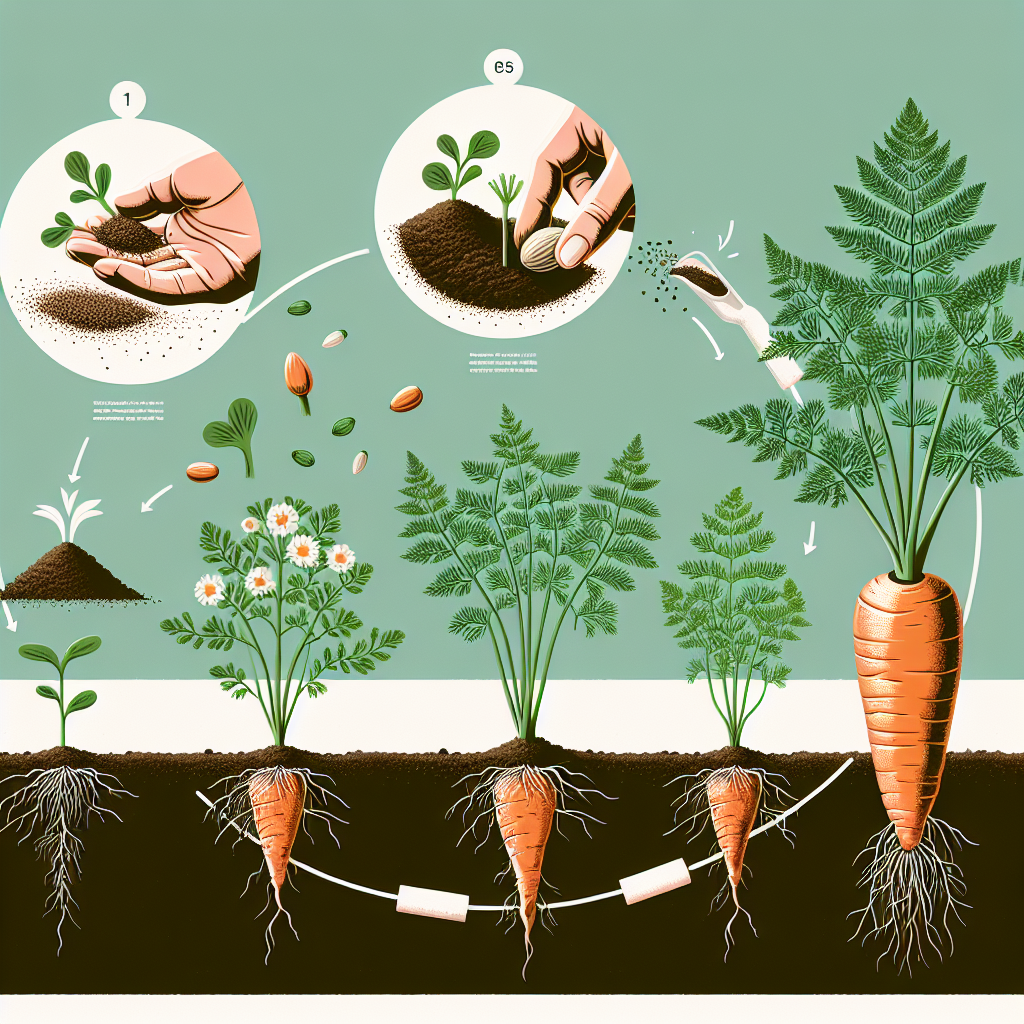
Carrot how to grow
The Essential Guide to Growing Carrots
Carrots are one of the simplest and most rewarding vegetables to cultivate in your garden. With their vibrant color, crunchy texture, and sweet flavor, they can enhance any dish. Not only are they nutritious, but they also provide a satisfying gardening experience for both beginners and seasoned gardeners. In this guide, we will explore the best practices and tips for growing carrots successfully.
Understanding Carrots
Carrots (Daucus carota) are root vegetables that are biennial, meaning that they take two years to complete their life cycle, but they are usually grown as annuals. They are classified into several types based on their shape and size, including:
- Nantes Carrots: Cylindrical shape with a sweet flavor.
- Imperator Carrots: Long and tapered, known for their crunchiness.
- Danvers Carrots: A hardy variety that adapts well to different soils.
- Baby Carrots: A marketable form cultivated for their small size.
These variations can influence your choice of which carrot to plant depending on your garden's conditions and your culinary preferences.
Ideal Growing Conditions
Before sowing your seeds, it's crucial to understand the environmental factors that affect the growth of carrots. Here are the key conditions you should aim for:
- Soil Type: Carrots thrive in loose, well-draining soil rich in organic matter. A sandy loam is ideal as it allows for proper root development.
- pH Level: Aim for a soil pH between 6.0 and 6.8. This range ensures optimum nutrient availability.
- Temperature: Carrots prefer cooler temperatures. They can be sown in early spring or late summer for a fall harvest.
- Sunlight: Full sun is optimal for carrot growth. Ensure they receive at least 6 hours of direct sunlight each day.
Preparing the Soil
Proper soil preparation sets the stage for healthy carrot growth. Follow these steps to get your soil ready:
- Clear the Area: Remove weeds, rocks, and debris from the area where you plan to plant.
- Till the Soil: Loosen the top 12 inches of soil using a spade or rototiller. This will help with drainage and root development.
- Add Organic Matter: Mix in compost or well-rotted manure to enrich the soil with nutrients.
- Level the Surface: Rake the soil to create a smooth, level planting area free of clumps or tripping hazards.
How to Plant Carrots
Now that your soil is prepared, it's time to plant your seeds. Here’s how to do it:
- Seed Selection: Choose high-quality seeds that are suitable for your climate and soil conditions.
- Sowing Depth: Carrot seeds should be sown at a depth of ¼ to ½ inch, as they need light to germinate. The spacing between seeds should be about 2 to 4 inches apart.
- Row Width: Plant in rows spaced 12 to 18 inches apart to allow adequate room for growth.
- Watering: After planting, water gently to avoid displacing the seeds. Keep the soil consistently moist during germination.
Care and Maintenance
As your carrots grow, they will need consistent care. Here are some essential tips for maintaining healthy carrot plants:
- Weeding: Keep the area around your carrots weed-free. Weeds compete for nutrients and water.
- Thinning: Once seedlings have grown to about 2 inches tall, thin them out. Space the remaining plants 2 to 4 inches apart for healthy growth.
- Watering: Water regularly, about 1 inch per week, especially during dry spells. Avoid overhead watering to prevent fungal diseases.
- Fertilizing: Use a low-nitrogen fertilizer. Too much nitrogen can encourage foliage growth at the expense of the roots.
Pest and Disease Management
Carrots are susceptible to various pests and diseases. Being proactive can help safeguard your crop. Here are some common threats and how to manage them:
- Carrot Flies: These pests are attracted to carrot foliage. Use row covers to protect young plants.
- Root Rot: Overwatering can lead to fungal diseases. Ensure proper drainage and avoid soggy soil.
- Aphids: These tiny insects can weaken your plants. Introduce beneficial insects like ladybugs or use insecticidal soap.
Harvesting Carrots
Knowing when and how to harvest carrots is crucial for achieving the best flavor and texture.
- Timing: Generally, carrots can be harvested about 70 to 80 days after planting. However, this can vary depending on the variety.
- Size Check: Carrots can be pulled once they reach about 1 inch in diameter. Taste one to determine if it’s ready!
- Harvesting Method: Use a garden fork to loosen the soil around the root and gently lift them out.
Storing and Using Carrots
After harvesting, proper storage is key to preserving the freshness and flavor of your carrots:
- Cleaning: Gently wash off any soil but avoid scrubbing, which can damage the skin.
- Trimming: Cut off the greens, leaving about an inch of the tops to prevent moisture loss.
- Storage: Store in the refrigerator in a plastic bag or container. Carrots can last for several weeks when stored correctly.
Conclusion
Growing carrots can be an enjoyable and rewarding experience. By understanding the *how to grow* process from soil preparation to harvest, you can cultivate a healthy crop that will delight your taste buds and inspire your culinary adventures. Remember to have fun, stay observant of your plants, and enjoy the fruits of your labor!
“In gardening, nothing is perfect, and nothing is ever wasted. Every little mistake is a lesson.”
So whether you’re planting them in raised beds, containers, or directly in the ground, following these tips will lead you on the path toward a successful carrot harvest.
By Guest, Published on August 8th, 2024